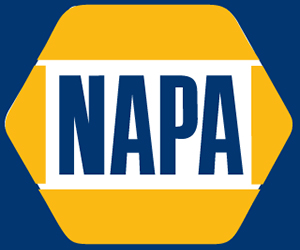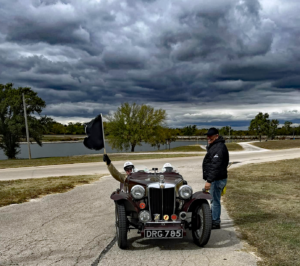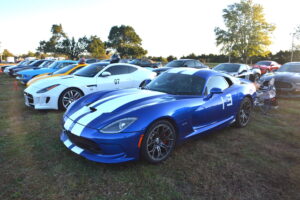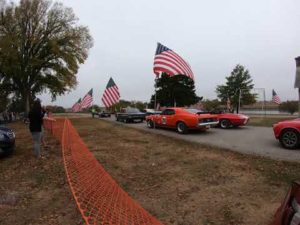Save Victoria British from Hemmings Sports & Exotic Car October, 2012 – Words and Photography by David LaChance
Little British sports cars, you might have noticed, have a lot going for them. They’re fun to drive. They’re blessedly free of snob appeal. They’re usually inexpensive to buy. And they’re cheap to keep, too. A Kansas City engineer named Leo Long noticed all of these things three decades ago, when he launched a parts business for some of the more popular British cars. He called his company Long Motor Corporation, but did business under a name chosen to evoke Old Blighty: Victoria British Limited.
Today, four years after the death of its founder, Victoria British continues to thrive, thanks largely to the team Leo had surrounded himself with. Among them is his wife, Janet. “Leo really was a self-made man, and he definitely knew where to reach out for resources to be able to support him in what he was achieving,” Janet says. “I always say that you’re only as strong as the people who support you. That’s why there are all those happy voices answering the telephone. And why your parts arrive without nicks or chips or bumps or bruises. We want you to be happy when you receive your packages.
“Leo was a car guy who had a passion for the business to take care of the ‘little guy,’ and he was determined to do things right,” she continues. “His perspective on the classic-car hobby is summed up by the Victoria British Ltd. slogan of ‘Keep ’em On The Road.’ I think Leo felt a responsibility to keep these cars on the road. So, throughout the years, he continually sourced parts and even tooled up to make parts so that our customers could ‘keep ’em on the road.’ That perspective still remains in effect today. Putting customers first, supplying parts that people need and parts that they want.”

Janet’s interest in cars, and British sports cars in particular, began long before her first meeting with Leo in 1986, when she interviewed for a job answering telephones. (She got the job.) She grew up as the youngest in a big family; “I was always handing wrenches and screwdrivers and whatnot to Dad in the garage, having to pump the brakes, hold the trouble light, all of those kinds of things,” she says. In high school, her head was turned by a Triumph TR6. Her brother helped her to find a Spitfire, and helped her make it roadworthy. “It had pretty much been abandoned, so we trailered it home and began the cleanup. It was never really a beauty, but I did drive it in college for three years.” Janet worked on the body, while her brother took care of most of the mechanical work. She drove the Spitfire–usually with its top down–during her student years at the University of Kansas, and still had it when she started her new job at Victoria British. “I thought, ‘Okay, remember this is a job, and you have to save more than you spend,’ but I think that helped a little bit on the application,” she says with a smile. In those days before the computer revolution, she would have to put a customer on hold and run out to the warehouse to make certain that a needed part was actually in stock–and hope that the customer was still on the line when she returned. The arrival of the first Apple Macintosh computer was a godsend, even if she and the other customer service folks had to take turns using it.
Things have changed considerably in the intervening years. (“Everybody has their own computer now!” Janet laughs.) Victoria British has grown to become one of the country’s leading suppliers of original equipment, reproduction and high-performance parts and accessories for British sports cars, with six catalogs that cover various models of Austin-Healeys, MGs, Sunbeams and Triumphs. LMC got out in front of the rising interest in Japanese collectibles, launching a parts supply division for Mazda RX7s and Datsun/Nissan Z cars under the Black Dragon Automotive banner. (Along the way, LMC also launched LMC Auto Carpet, LMC Van, and LMC Truck–which offers parts for Chevy, GMC, Ford and Dodge trucks and SUVs.)
As a privately held company, LMC keeps its sales figures to itself, though Janet revealed that enough Victoria British orders roll in every day to keep 45 employees busy year-round, and to fill a UPS trailer every day. Orders come from around the globe; most are shipped within the United States and Canada, but the company has had customers from all seven continents–and has even shipped parts to the United Kingdom. With the exception of a few interior pieces, all of the 16,000 or so parts listed in the Victoria British catalogs are stocked in its Lenexa, Kansas, warehouses.
The most popular products tend to be “maintenance items, such as brake shoes and rotors, in addition to anything rubber,” Janet says. “Most of the British cars that Victoria British offers parts for have aged to the point that the rubber seals need to be replaced. And convertible tops always seem to need replacement.” With the last of the British cars it serves having arrived in the U.S. in 1980, the market is somewhat mature, without a lot of surprises. Still, the need does sometimes arise for a new part. “Deciding to carry a part is easy. Is it something anyone would want or need? If there is need for the part, and the original tooling is too old to be used, we can produce new tooling to keep the product available. But not all parts are an option for manufacturing,” she says. One recent trend, Janet says, is the restoration of cars that have been passed along from their original owners to family members, or sold. “It’s one of the biggest trends–and it’s kind of hard to put a number on it, because I don’t think that any true analytics have come out of this,” she says. “The parents are getting older, they’re not able to drive them, and the kids are taking over. Either the parents haven’t worked on the car in a while, so it’s in need of a little restoration, or it’s been in a garage and now the son or daughter finally has the opportunity and the financial means to restore the vehicle. And they remember it as a kid when they got to ride with their dad and go on special trips, or sat in the car and weren’t allowed to touch it–and certainly weren’t allowed to drive it. And now it’s theirs.”
Over her 25 years in research, development and marketing, Janet has gotten to build a strong relationship with a number of clubs, both local and national. She was especially pleased when the dozens of MG drivers in the 2011 MG Rallye to Reno stopped by on their way to the all-MG meet in that Nevada city. Victoria British put on a catered meal under a tent, free of charge, and participants took the opportunity to stock up on needed parts.
Leo was never interested in building up a collection of show cars, and Janet shares his philosophy that cars are meant to be driven. “We have our ‘keep ’em on the road,’ and we mean that. I love it when spring starts coming, and you see people bringing their cars out. Last summer, I think I did see a lot more British cars around Kansas City. You know, I always honk and wave–people probably think I’m crazy–but I’m glad to see them out and about and see them being enjoyed. That’s what they’re meant for.”
This article originally appeared in the October, 2012 issue of Hemmings Sports & Exotic Car.MORE INFORMATION







